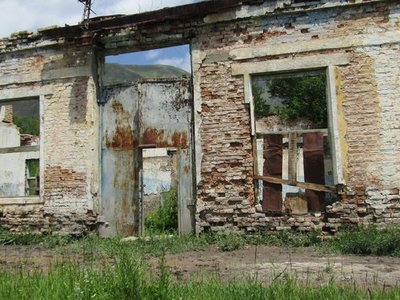Min Kush


Min Kush, which means “a
thousand birds” in Kyrgyz, was formally established in 1955 as an industrial town built around a uranium mine. At its peak, the population reached around 20,000. After the fall of the Soviet Union and closure of the mine, it dropped to just 2,000.
Today the impoverished village is deteriorating; many buildings are empty and boarded up, and radiation levels can reach 10 times higher the norm. While some coal mines are still active, the majority of residents are unemployed, living on small pensions leftover from the town’s glory days.
While houses in most villages are usually built for a single family and rarely surpass two floors, the buildings in Min Kush are at least three or four times bigger. Some were actually flat-blocks, while others were probably used for administration. Now, they look rundown, but once upon a time they must have been stunning. Some of these buildings were completely abandoned, and are crumbling and overgrown with vegetation.
Further uphill is a mining center. It is cordoned off, but it is obvious that someone is using these facilities as animal shelters, and sections of the surrounding land were actually cultivated. A semi-buried building bears the date 1955 on its facade. Another building has huge, deep holes in its floor. Other buildings are simply locked.
Beyond the boundaries on the town, there are four radioactive mill piles. The biggest pile, Tuyuk-Suu, is located in a valley, and two canals were built to divert a stream running in the middle to avoid contamination. Lack of maintenance has led to water trickling over the canals, making the whole area unsafe. The other three piles are also in dire need of maintenance. Cows, sheep and goats graze freely in the meadows surrounding the piles.